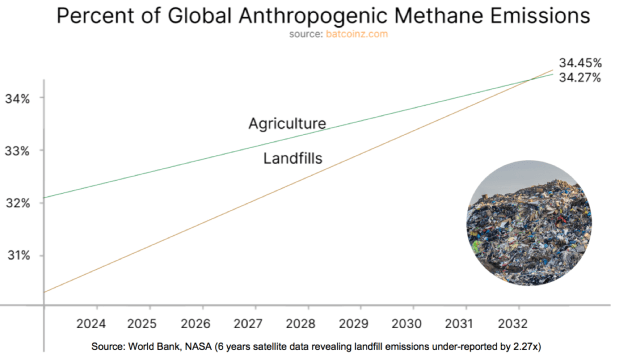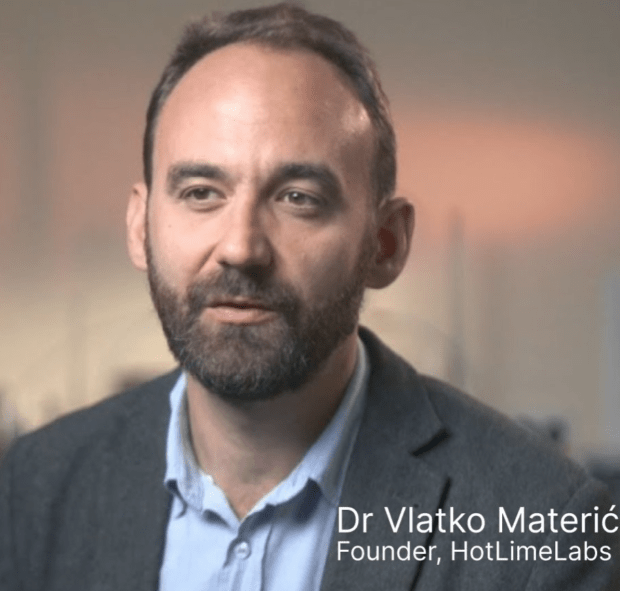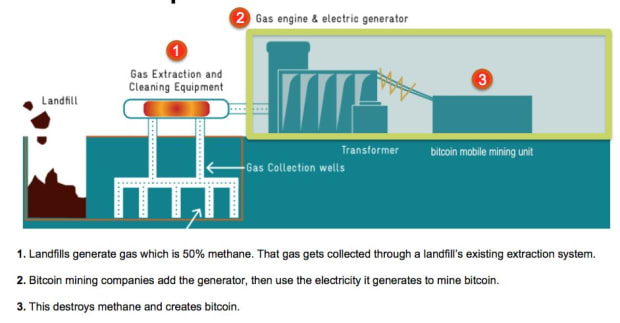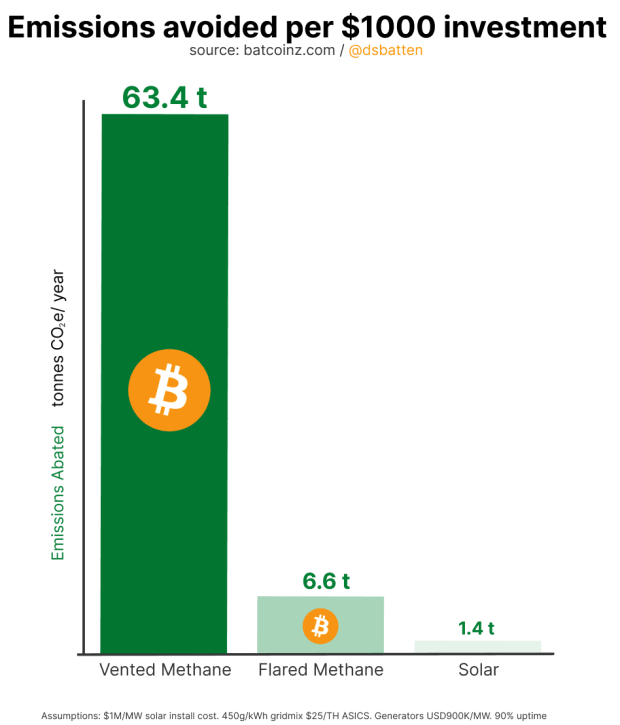Blogs & Articles: Could Bitcoin Be Our Best Chance To Mitigate Runaway Methane Emissions? 🔗 37 weeks ago

- Category: Blogs & Articles | Bitcoin Magazine: Bitcoin News, Articles, Charts, and Guides
- Author(s): Daniel Batten
- Published: 11th August 2023 15:10
This is an opinion editorial by Daniel Batten, a Bitcoin ESG analyst, climate tech investor, author and environmental campaigner.
I didn’t get interested in Bitcoin because of its ability to solve financial issues. My background is in investing in climate tech. When I first heard about Bitcoin, I was highly skeptical and regarded it as a negative to the environment. However, I was persuaded to put prejudice to one side and evaluate it as I would any other technology I was doing due diligence on. After evaluating the claims and data from both sides I reached the conclusion that on net balance, Bitcoin had the unique ability to solve more than one difficult-to-solve climate-change issue.
First, some context: I have been a climate activist since the 1990s. Several years ago, I channeled this into working in the space of climate tech. Between 2014 and 2019, I traveled around New Zealand, hearing some of the smartest people in the country discussing their ideas, and helping them to commercialize them. Most of these ideas were some form of climate tech. I encountered over 200 different climate tech propositions during this time, and set up my first climate tech fund at the end of 2019.
Throughout that time, I never encountered a technology that had the immediacy, scalability and potential impact of Bitcoin mining using vented methane gas to measurably reduce global emissions pre-2030.
Bitcoin Mining And Methane Emissions
One day, as part of my work at the fund, I was reading an article about methane emissions.
It said that methane was 84-times more warming than carbon dioxide over a 20-year period, that it was rising parabolically and that the UN said "reducing methane is our strongest lever to reduce climate change!"
I was shocked. How, as a climate tech fund manager, could I have neglected addressing methane emissions?
I did some further research and found out that I wasn’t the only one. Out of every $1 spent on climate tech, only 2 cents was going toward methane mitigation, I found.
That day, I got brutally honest with myself and asked, “How much of a difference am I making?” There was no doubt that we were investing in some brilliant technologies and people that could reduce emissions on a global scale. But it turned out that a lack of emphasis on methane mitigation was not my only oversight.
The tech we invested in:
- Was high risk (it might never scale)
- Would only reduce emissions post-2030
- Wasn't addressing our most urgent emission issue
I asked the question, “Could I be doing more?” The answer was, of course, “Yes.” I could be investing in technologies that were:
- Low risk
- Able to measurably reduce emissions pre-2030
- Able to address our number-one lever to reduce climate change in the next 25 years (methane)
I started researching more about methane-mitigation technology. Most of it was like carbon-dioxide-emission technology: high-risk technology that wouldn’t be available until after 2030. While there was no doubt that we should also be investing in those technologies, that was no longer my focus.
I decided that if I were going to create a third fund, it would be optimized for immediate impact, and maximize emissions reduced per dollar invested. Otherwise, there was no point.
So, I began researching two things:
- How to use low-risk technology available immediately to reduce emissions pre-2030
- What our major sources of methane were
To answer the first question, I looked at proven ways to reduce methane emissions using existing technologies. Reading the work of experts from the Environmental Defense Fund (EDF) and also the United States Environmental Protection Agency (EPA), there was little doubt that the technology existed to perform methane mitigation at scale today: power generation.
In other words, capturing that methane and sending it to a generator, turning it into electricity. OK, that sounds like a good idea, particularly with energy prices spiking globally, I thought.
So, I turned to our second question, “Where is most of our methane coming from?”
The answer, I found, was agriculture, oil and gas and landfills.
However, of those three, the one that seemed the easiest to do something about quickly was also the one that my calculations told me would be our number-one methane emitter by 2032, overtaking agriculture: landfills.
 Source: Author
Source: Author
That led me to the question that changed everything I was doing: “Why isn’t this being done already?” As one expert who’d been doing landfill-based power generation projects since 2005 explained to me, “Landfills are never in the right place. In many cases, negotiating with the grid owner is complex and bureaucratic. And, even if you can do it, often the grid needs a major substation upgrade to be able to take that power. It ends up being too expensive.”
“But what if, rather than selling that power to the grid, you had someone who could use it on location, at the landfill?” I asked.
He shook his head.
“But who would want to do that?” he asked. “Landfills are smelly places, and the methane is a health hazard. No one would want to set up a business there.”
That was the point where two worlds suddenly collided for me. Several months earlier, I’d also been researching Bitcoin. Not because I thought it had any merits in terms of climate tech — in fact, I thought it was bad for the environment. It was simply a hobby. I like to get to the bottom of issues and understand the data behind them. Bitcoin was simply in that category.
I had environmentalist friends who told me that Bitcoin was bad for the environment. But I also had a friend in the Bitcoin community who told me that was nonsense based on people’s lack of understanding of Bitcoin mining.
The turning point came in late 2021 when I talked to Vlatko Materić, an environmentalist and the founder of one of our climate tech companies who challenged my assumptions about energy and Bitcoin, and encouraged me to dig deeper. I did, and quickly learned that he was right: Bitcoin’s location-agnostic features and high percentage of operating costs spent on electricity made it ideally suited to using stranded energy that no one else wanted or was able to access.
Listening to grid operators, bitcoin miners and renewable energy engineers was critical during this time. Had I relied on academic articles and journalism, I would have come away with some very different conclusions. When I did read the latter, by contrast, it became more and more apparent to me that they were critiquing a technology that they didn’t fully grasp. This lack of reliable data on Bitcoin's environmental impact from the articles and studies I read led me to do my own studies.
Taking Climate Action With Bitcoin
So, skipping forward in time, when that landfill expert said that no one would want to locate at landfills, I said to myself, “I know someone who definitely would.”
It turned out that others had already thought of that, and that two Bitcoin mining companies were either already doing landfill-gas-powered bitcoin mining, or on the cusp of doing it (Nodal Power and Vespene Energy).
When I did the math on Bitcoin using vented methane gas, it was a eureka moment. A fund that financed the deployment of infrastructure into Bitcoin mining using landfill gas could mitigate more emissions than any financial instrument I’d seen. It was 45-times more emission reducing than solar installations.
To put the above chart into context, for someone living in the west, our calculations suggested that $108 could offset their emissions for the year. Less than $10,000 could offset their entire carbon footprint for a lifetime. We did some work to build a team, and come up with a business model that could return a steady yield to our wholesale investors, and that became the basis of the fund CH4 Capital.
I didn't start off as a Bitcoin advocate, but I've become one. My conclusion: There's probably never been a more important technology for our chances of mitigating runaway methane emissions, enabling the renewable transition and, as I found out along the way, giving financial sovereignty to more than 4 billion people.
For the first time ever, I feel there's something I can do beyond my own carbon footprint that could make a difference to our emission levels. It's a drop in the bucket, but it’s a start. And it's a start that we wouldn't have without Bitcoin.
That’s why I say: Bitcoin is climate action.
This is a guest post by Daniel Batten. Opinions expressed are entirely their own and do not necessarily reflect those of BTC Inc or Bitcoin Magazine.















